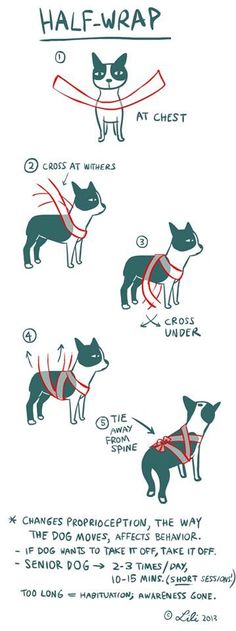Noise Phobias and Calming Techniques
Jul 1, 2019 Tracey Aston Behavior

The summer months can be a virtual minefield for pets with
noise phobias. The hotter, humid days can usher in the chance of severe
thunderstorms and Independence Day celebrations, outdoor baseball games and
concerts are often celebrated with a fireworks display. Up to 30% of dogs have a thunderstorm phobia
and according to a study published in the journal of Applied
Animal Behaviour Science, 45% of dogs have a fireworks phobia. Due to these noise phobias, more pets are
lost on Independence Day than any other day of the year!
With those high percentages, there is a good chance a dog
you love suffers from some type of noise phobia. So what is a pet parent to do when their
beloved pets become a ball of shaking, panting anxiety? Thankfully, there are
several different options to help calm down a fearful Fido.
Noise phobias come in varying degrees and how affected the
particular dog is will determine what options may work best for them. It may
come down to the dog's personal preference and comfort levels. Always act normal around a fearful pet as the
more their pet parent reacts, the more they will react. If possible, try
distracting the pet with a game, a puzzle treat dispenser or even cuddling.
By far, the simplest way to address minor noise phobia is
background music to drown out or muffle the fear-inducing noises. This can be
as easy as turning on the TV or tuning the radio into soft, classical or
instrumental music. Keep in mind, our pets hearing is far better than ours, so
be careful how loud you turn on the TV or radio. In an attempt to cover over
the outside noise, some pet parents will raise the volume too high, which is
just as jarring to pets. There are also
music CDs made especially to help a pet relax, such as Through
a Dog's Ear and Wholetones. Victoria Stilwell takes using music to soothe
pets a step further with her Canine
Noise Phobia Series. According to
her website Positively.com, “The Canine
Noise Phobia Series (CNP) is a 4-CD compilation of specialized audio recordings
and innovative training protocols specifically designed to reduce and prevent
noise phobias and anxiety in dogs.”
Some pets respond well to calming or appeasing pheromone
products. These products can be bought in sprays, plug-in diffusers and wipes.
In a Pet
Web MD article, Jacqui Neilson, DVM, DACVB, owner of the Animal Behavior
Clinic, explains that pheromones are a type of chemical communication between
members of a species. The vomeronasal organ, which is located between the nose
and mouth, receives pheromones. Neilson says certain pheromones, called calming
or appeasing pheromones, can sometimes help relieve stressed pets.
Thundershirts are popular among both dog and cat owners as a means to relax a noise phobic pet. According to their website, the Thundershirt “Applies gentle, constant pressure, similar to swaddling an infant.” This effect can also be made with a properly placed aced bandage, scarf or form fitting t-shirt. If using an ace bandage, train yourself on how much pressure is required. Applying too much pressure can cause circulation issues and damage nerves.

Image by Lili.
Some pet parents have luck with a product like Rescue Remedy, which is a blend of 5 original flower remedies, in a pet-friendly,
alcohol-free formula. Rescue Remedy can be given by placing a few drops on your
finger and rubbing it on a pet's gums, or putting a few drops on a treat. Never
place the glass dropper into a pet's mouth!
Essential oils, such as lavender can be diffused in the air
or a few drops can be placed on a collar or bandana to help alleviate
stress. There are a few warnings that
come with essential oils – they aren't to be given orally or in a place that
dog can easily lick. Also, what is a background smell to you may overwhelm the
delicate noses of our dogs. Warning: lavender is harmful to cats! If a
household contains both dogs and cats, refrain from using lavender essential
oils!
Dogs love a safe place to den and their crate can be used as
their safe place. If a pet is still experiencing anxiety while in their crate,
a thick blanket can be draped over the top or acoustic foam panels added to the
sides to act as a sound reducer. Zen Dog Crate is a crate made specifically
for sound reduction for noise phobic pets and may provide more relief than a
normal crate.
In cases of extreme noise phobia, anti-anxiety medication
can be prescribed by a veterinarian.
Never use prescription medication for a pet without first consulting
their veterinarian to check for side effects or possible medication interaction
with other prescriptions.
It's important to realize the pet is acting out of fear and
may react differently than they normally would. In some cases, a pet will even
try to outrun the noise, and this can lead to lost and injured pets. Close all
windows and watch entering and exiting doors.
If taking a pet out for a potty break, make sure they are securely on a
leash or harness.
Whatever option is chosen, it's important to remember the
pet is experiencing real fear. Don't scold or punish them for this. A pet
parent may have to try several different options before finding the one that
works for their pet; don't give up. Patience, love and understanding are always
the best soother.
















